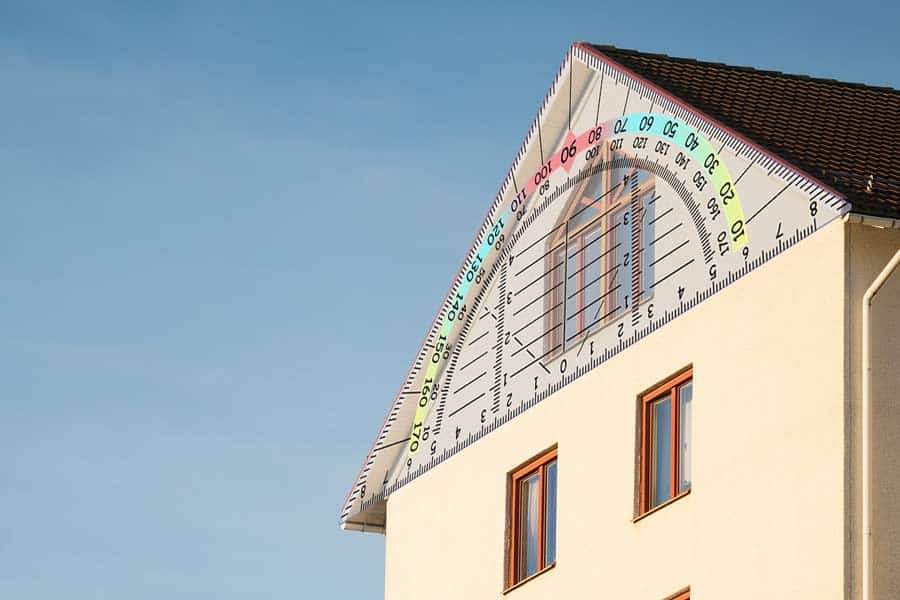When looking to repair your roof, there are many aspects of the roof that need to be considered. Probably one of the most important parts of the roof that needs attention is the roof pitch. But what is it? Why is it important? How do you measure it? Before you look at repairing your roof, look at why the roof pitch plays a pivotal role in keeping your roof together.
WHAT IS ROOF PITCH?
The roof pitch is the most visible aspect of the roof. It is basically the slope of your roof. It is the measure of the steepness of the roof. This is expressed as the ratio of the vertical rise, or the change in height per unit, to the horizontal run, or change in distance. It is also defined as the “angle of the roof surface over the “flat” or horizontal plane.”
WHY IS ROOF PITCH IMPORTANT?
Water and snow on a roof can cause mold, leaks, and other damage to it. The biggest reason roof pitch is so important is to allow run-off of rain or snow and prevent damage. In areas where it is likely to rain or snow, homeowners are more likely to build a steeper roof. Many of these states have a minimum pitch level in their building codes. Pitch is also important because it determines the materials used for the roof and how the roof will last long term.
HOW TO MEASURE ROOF PITCH
The measurement of roof pitch is calculated by the number of inches it rises vertically for every 12 inches it is in depth. An example is a 6/12 roof pitch, which means it rises 6 inches for every 12 inches inward. There are two common ways to measure roof pitch. The first is at the top of the roof. There you measure the distance from the level to the surface. But, if the roof has a lot of shingles, this way could lead to an inaccurate measurement. The second way is by going to the bottom of the rafters in three different locations: the underside of a rafter at an overhang at the bottom of the roof, the underside of a rafter at the gable end, and the underside of a rafter in the attic.
TYPES OF ROOF PITCH
There are four common types of roof pitch:
- Flat: a pitch of 1/2:12 to 1:12
- Low-Slope: a pitch of 1:12 to 4:12. Not as efficient at allowing run-off
- Medium-Slope: a pitch of 4:12 to 9:12, most commonly 6:12.
- Steep-Slope: any pitch above 9:12. May require more fasteners
Most homes are steep-pitched because they are more attractive. High-pitched roofs may cost more because they are longer. Low-pitched roofs go well in light snow climates, as well as ranch homes. For higher snow areas, a higher pitch will give you a better runoff. Some roofing materials like metal or concrete are better for a low pitch, while tile and shingles are better for higher pitches.
Looking For a Roofing Contractor?
Cox Brothers Roofing offers roof repairs, replacements, and new roofs to homeowners and businesses across South Texas. Now serving: Victoria, Cuero, Goliad, Alamo Heights, Bulverde, Helotes, Steeple Brook, Stonewall Ranch and Timberwood Park.
You’re always in good hands at Cox Brothers Roofing. We take pride in always maintaining high-quality craftsmanship and materials in order to give you the best roofs and roof repairs in South Texas. Our team includes not only experienced roofers, but also insurance experts who specialize in assisting with homeowner’s insurance claims for roof repair and replacement. We strive for excellence in every step of serving our customers and ensure that your roof will last you for years to come.

